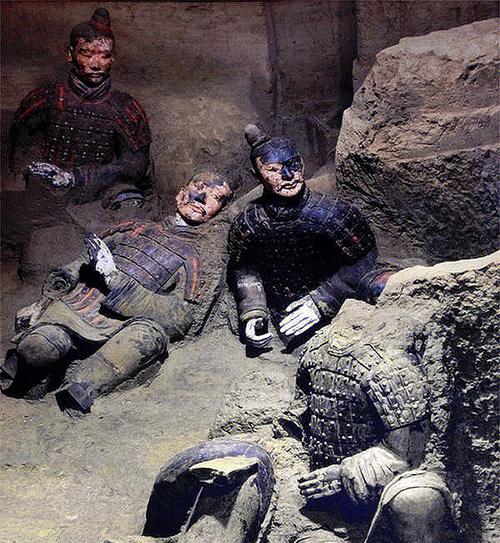
The Mystery of the Missing Terracotta Army
The Terracotta Army, an awe-inspiring collection of life-sized terracotta sculptures depicting the armies of Qin Shi Huang, the first emperor of China, stands as a testament to the power and artistry of ancient China. However, this UNESCO World Heritage site harbors a fascinating mystery: the disappearance of significant portions of the original army.
Evidence of Looting and Destruction
Historical accounts and archaeological evidence point towards a tumultuous period following the death of Qin Shi Huang, a period that likely saw the destruction and looting of the Terracotta Army.
-
Xiang Yu's Rebellion: Following Qin Shi Huang's death, a rebellion led by Xiang Yu, a rival general, engulfed the Qin dynasty. Historical texts suggest that Xiang Yu and his forces sacked the Qin capital, Xianyang, and targeted the emperor's tomb complex, where the Terracotta Army is located.
-
Burning of the Site: Evidence of a massive fire has been discovered at the site, with charred earth and remnants of burned wooden beams littering the pits containing the terracotta figures. This fire is believed to be the result of Xiang Yu's attack, with the wooden structures supporting the pit roofs deliberately set ablaze.
-
Collapsed Roof and Crushed Figures: The intense heat from the fire would have caused the wooden roof supports to collapse, sending tons of earth and debris crashing down upon the terracotta figures below. This catastrophic event explains the fragmented state in which many of the figures were discovered.
-
Missing Weapons: Adding further weight to the looting theory is the conspicuous absence of actual weapons alongside the terracotta warriors. While some bronze weapons have been found, the sheer scale of the army suggests a far greater number should be present. It's theorized that Xiang Yu's forces stripped the figures of their bronze weaponry, which was melted down and repurposed.
Restoration from Fragments
The terracotta figures we see today are a testament to the painstaking work of archaeologists and conservators.
-
Meticulous Reconstruction: Unearthed in thousands of pieces, each figure represents a monumental jigsaw puzzle. Experts meticulously piece together the fragments, using a combination of traditional techniques and modern technology.
-
Preserving the Past: The restoration process aims not only to reconstruct the figures but also to preserve them for future generations. This involves cleaning, stabilizing the fragile terracotta, and filling in missing sections.
Unanswered Questions and Ongoing Research
While the evidence strongly suggests Xiang Yu's involvement in the destruction and looting of the Terracotta Army, many questions remain unanswered:
- The Full Extent of the Loss: The exact number of figures originally created for the army remains unknown. Therefore, the true extent of the loss caused by the fire and looting is difficult to quantify.
- Other Potential Contributors: While Xiang Yu is considered the primary suspect, it's possible other groups, such as tomb robbers or later rebellions, may have contributed to the damage and looting.
- Continuing Discoveries: Archaeological work at the site is ongoing, and new discoveries continue to shed light on the history of the Terracotta Army and the circumstances surrounding its partial destruction.
Q&A
1. What evidence suggests the Terracotta Army was looted?
Historical accounts link the destruction to Xiang Yu's rebellion, and archaeological findings reveal a large fire at the site. Moreover, the absence of the vast number of weapons expected for an army of this scale points to looting.
2. How were the figures restored?
Archaeologists and conservators meticulously pieced together the thousands of fragmented figures using a combination of traditional techniques and modern technology, working to preserve them for future generations.
3. Are there still unanswered questions about the Terracotta Army?
Yes, the exact extent of the loss, potential contributions from other groups besides Xiang Yu, and the ongoing archaeological discoveries continue to fuel research and intrigue surrounding this ancient wonder.